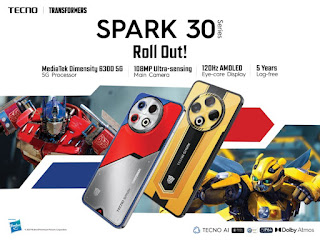October 25, 2024
Visual storytelling uses images, videos, and other multimedia content to convey brand messages and narratives. It harnesses the power of visual elements to establish an emotional connection with the audience, making the brand more relatable and memorable.
The Power of Visuals in Storytelling
Visuals has a profound impact on the human brain, with studies showing that people process visuals 60,000 times faster than text. Moreover, visuals evoke emotions, making it easier for audiences to remember and engage with brand messages.
In marketing, visuals consistently outperform text in terms of engagement. According to HubSpot, visual content is 40 times more likely to be shared on social media than other types of content. This increased engagement can lead to higher brand awareness, trust, and loyalty.
Brands like Airbnb, Coca-Cola, and Nike have successfully incorporated visual storytelling in their marketing strategies, using captivating visuals and powerful narratives to connect with their audiences and promote their brand values.
Elements of Visual Storytelling
Effective visual storytelling consists of three key components: a clear narrative, compelling visuals, and strategic placement of these visuals within the content.
Color, imagery, and typography play a significant role in visual storytelling, as they evoke emotions, set the tone, and guide the viewer's attention. You should carefully consider these elements when crafting your brand’s visual narratives.
Static photos aren’t the only way to go. Videos and animations also offer unique opportunities for visual storytelling, allowing brands to showcase their products, services, and values in a dynamic, engaging way.
Incorporating Visual Storytelling in Your Brand
To effectively incorporate visual storytelling, brands must first understand their identity and target audience. These factors will inform the brand’s visual narrative’s visual style, tone, and messaging.
A visual style guide ensures consistency across all visual content, helping to reinforce the brand's identity and messaging. This should include details on color palettes, typography, imagery, and other visual elements.
To efficiently plan your visual narrative, utilize a storyboard. It will help in planning and organizing your visual narrative before implementation. Storyboarding involves mapping out the visual content to ensure a cohesive story.
Tools and Platforms for Visual Storytelling
Various tools and platforms, such as Adobe Creative Suite, Canva, and Final Cut Pro, have elements, free images, and photo and video manipulation settings. These assets enable brands to create professional-quality visual content for their visual narratives.
Aside from static photos, you can bank on interactive visuals, such as infographics and data visualizations. They offer a dynamic, engaging way to present information and tell visual stories that can help brands educate, entertain, and persuade their audiences.
Once your visuals are ready, utilize platforms like Instagram, Pinterest, and TikTok to connect with your target market. They offer unique opportunities for visual storytelling, allowing brands to reach and engage with their audiences in a more personal, authentic way.
Creating Engaging Visual Content
Brands should invest in high-quality visuals to ensure their visual narratives are engaging and professional. You can capture high-quality visuals by using natural light, investing in quality equipment, and experimenting with different angles and compositions.
Use these visuals along with persuasive text to achieve effective visual storytelling. Your material should seamlessly integrate visual and textual elements, making way for a cohesive and engaging story.
Another way to have engaging visual material is through user-generated content (UGC). By allowing brands to engage their audiences and showcase real-life experiences with their products or services, they become a powerful tool for visual storytelling. A
public relations agency can help connect you with relevant influencers and effectively plan your UGC strategy.
Measuring the Success of Your Visual Storytelling Efforts
To measure the success of your visual marketing strategy, look at your key performance indicators (KPIs) like engagement rates, conversion rates, and social media shares.
Analyzing engagement and conversion rates helps in understanding how well your visual narratives are resonating with your audiences and identify areas for improvement.
By regularly reviewing your analytics, you can adjust your visual storytelling efforts accordingly to better resonate with your target market. This can involve refining your visual style, messaging, or content distribution channels.
Challenges in Visual Storytelling
Common pitfalls in visual storytelling include using low-quality visuals, neglecting the narrative, and failing to consider the audience. You can avoid these problems by investing in high-quality visuals, crafting compelling narratives, and understanding your target audience.
A more intricate challenge is navigating copyright issues. When using pictures, videos, or other kinds of media, make sure to get permission from the copyright holder to avoid legal issues.
Visual storytelling trends are constantly evolving. Brands like yours have to adapt to these changes, so make sure to explore new visual formats like AR, VR, and 360-degree videos. You can also leverage emerging technologies, like artificial intelligence, to create visual content.
Future Trends in Visual Storytelling
Emerging technologies, such as augmented reality (AR), virtual reality (VR), and 360-degree videos, offer exciting opportunities for visual storytelling. They can elevate promotional materials to be more immersive and interactive for audiences.
Artificial intelligence (AI) is increasingly being used to create visual content, with AI-powered tools and platforms automating the design process. Using AI responsibly can help your brand produce high-quality visuals more efficiently.
As visual storytelling continues to evolve, brands can expect to see more interactive, personalized experiences, as well as increased use of AI and emerging technologies in visual content creation.
Tell stories effectively!
Incorporating visual storytelling in your brand's narrative requires careful planning, strategic execution, and a deep understanding of your brand's identity and audience. By investing in high-quality visuals, crafting compelling narratives, and staying relevant, brands can harness the power of visual storytelling to stand out in a crowded market and build lasting relationships with their audiences.

































